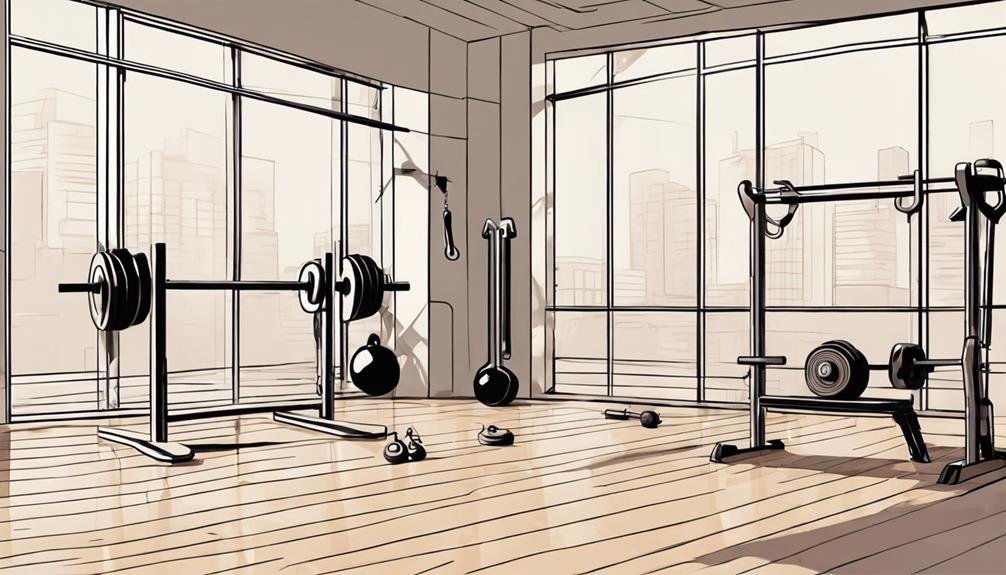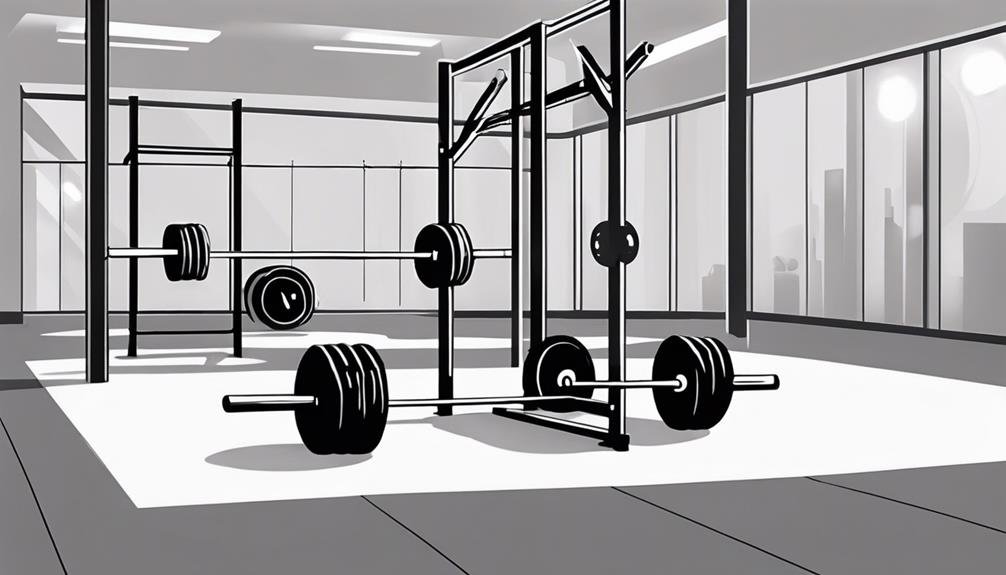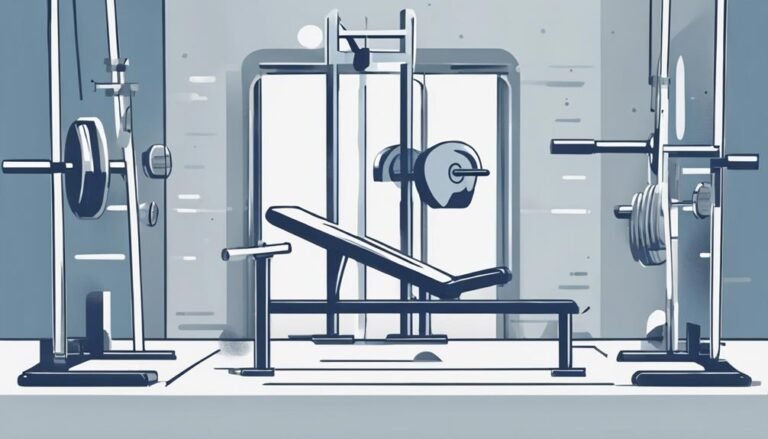5 Functional Workouts for Fit Men Over 40
For fit men over 40, functional workouts enhance strength and agility for daily tasks. Start with squat variations—master bodyweight squats before progressing to goblet and single-leg squats. Next, incorporate push-up progressions, beginning with basic push-ups and progressing to variations like incline and diamond push-ups. Deadlift techniques come next; focus on proper form with lighter weights before adding more load. Finally, engage your core with stability exercises like planks and bird-dogs. These workouts not only boost fitness but improve overall quality of life, making daily activities easier. There's more to explore about functional exercises that can elevate your routine!
Key Takeaways
- Incorporate squat variations to enhance lower body strength and improve balance, crucial for daily activities.
- Utilize push-up progressions to build upper body strength while promoting core stability for overall fitness.
- Practice deadlift techniques to strengthen the posterior chain, improving posture and functional movement.
- Engage in core stability exercises like planks and bird-dogs to enhance coordination and prevent injuries.
Benefits of Functional Workouts
Functional workouts offer a range of benefits that can help you stay active and healthy as you age. They focus on movements that mimic everyday activities, making you stronger and more agile for daily tasks.
You'll improve your balance, coordination, and flexibility, reducing the risk of falls and injuries. These workouts also boost your cardiovascular health, keeping your heart strong.
Plus, they're adaptable, so you can easily modify exercises to match your fitness level. Engaging in functional training can enhance your overall quality of life, allowing you to enjoy activities with family and friends.
Ultimately, you'll find that staying fit becomes more enjoyable and sustainable, helping you maintain independence and liveliness as you grow older.
Workout 1: Squat Variations

Incorporating squat variations into your routine can greatly enhance your strength and stability, making daily movements easier and safer.
Start with bodyweight squats to master your form, then progress to goblet squats using a dumbbell for added resistance.
Try single-leg squats to engage your core and improve balance. If you're feeling adventurous, incorporate jump squats to boost power and explosiveness.
Remember to focus on your depth; aim to go as low as your mobility allows while keeping your back straight.
As you get more comfortable, you can add weights or resistance bands to increase the challenge.
Consistently practicing these variations won't only strengthen your lower body but also enhance overall functional fitness for your daily activities.
Workout 2: Push-Up Progressions
Push-up progressions are an excellent way to build upper body strength and improve your overall stability.
Start with the basic push-up, ensuring your body forms a straight line from head to heels. If that feels too challenging, try knee push-ups to reduce the load while maintaining proper form.
As you gain strength, progress to incline push-ups with your hands elevated on a bench or wall. Once you're comfortable, move to standard push-ups, focusing on controlled movements.
For an added challenge, incorporate variations like diamond push-ups or wide-grip push-ups to target different muscle groups.
Remember to engage your core throughout each variation. Consistent practice will lead to noticeable improvements in strength and endurance, setting a solid foundation for more advanced exercises.
Workout 3: Deadlift Techniques

Mastering deadlift techniques is essential for building overall strength and stability, especially as you age.
Start by positioning your feet shoulder-width apart, with your toes slightly pointed out. Grip the bar just outside your knees, ensuring your back is flat and your chest is up.
Engage your core and push through your heels as you lift the bar, keeping it close to your body. Remember to extend your hips and knees simultaneously for a smooth ascent.
At the top, stand tall but don't hyperextend your back. Lower the bar by hinging at your hips first, maintaining that flat back.
Practice with lighter weights to refine your form, and gradually increase the load as you gain confidence.
Consistency is key!
Workout 4: Core Stability Exercises
Building a strong core is essential for men over 40, as it enhances balance, stability, and overall functional movement. Incorporating core stability exercises into your routine can help you achieve these benefits effectively.
Here are four key exercises to include:
- Planks: Engage your entire core while holding a plank position for 30-60 seconds.
- Bird-Dogs: Improve coordination and stability by extending opposite arm and leg while on all fours.
- Russian Twists: Strengthen your obliques by rotating your torso while seated, holding a weight or medicine ball.
- Side Planks: Target your lateral core muscles by holding a side plank for 30-60 seconds on each side.
Start integrating these exercises, and you'll notice improvements in your core strength and overall performance.
Questions
How Often Should I Perform Functional Workouts Each Week?
You should aim for at least three to four functional workouts each week. This frequency helps improve strength, flexibility, and endurance while allowing your body to recover adequately between sessions for peak performance.
Can Functional Workouts Help With Injury Prevention?
Yes, functional workouts can definitely help with injury prevention. They improve your strength, flexibility, and balance, which reduces the risk of injuries. Incorporating them into your routine will keep you active and feeling great.
What Equipment Do I Need for These Workouts?
You'll need minimal equipment for these workouts. A good set of resistance bands, a stability ball, dumbbells, and a sturdy mat will cover most exercises. Don't forget a water bottle to stay hydrated during your sessions!
Are Functional Workouts Suitable for Beginners?
Absolutely, functional workouts are as suitable for beginners as peanut butter is for jelly! You'll find they cater to all fitness levels, helping you build strength and endurance without overwhelming you. Immerse yourself and enjoy!
How Do I Track My Progress in Functional Training?
To track your progress in functional training, keep a workout journal. Record your exercises, reps, and weights. Regularly review your improvements and set new goals to stay motivated and focused on your fitness journey.
Conclusion
Embrace the power of functional workouts, and watch your body transform like a sculptor chiseling away at marble. These exercises not only build strength but also enhance your everyday movements, keeping you agile and resilient.
As you tackle squats, push-ups, deadlifts, and core stability drills, you're not just working out—you're crafting a fitter, more vibrant version of yourself.
So lace up those shoes, and let each rep be a step towards a healthier, more dynamic life!







